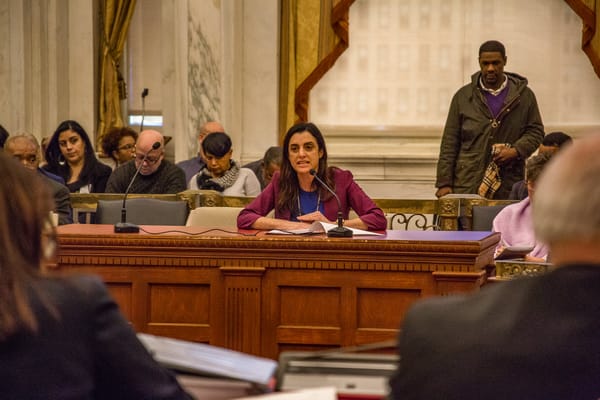A Century of Backsliding on Immigration

Those who live in the West have the tendency to view history, and their societies in particular, as getting more progressive with time. It certainly does make sense in many instances. Same-sex relations were criminal in the past, now they are completely legal, with Western countries increasingly allowing gay marriage. Women used to be brutally subordinated to men, now they are their legal equals in every manner (attacks on abortion notwithstanding). In the Western imagination, things have simply gotten more progressive with time. However, an area where things have gotten more restrictive and reactionary is immigration, a fact not widely recognized.
Before the 1880s, and for Europeans, until 1924, a typical immigrant to America could simply go to the nearest port, board the nearest ship, land in New York, New Orleans, or San Francisco, and be processed on arrival. Unless the immigrant was a “convict, lunatic, idiot, or any person unable to take care of himself or herself without becoming a public charge”, he could be expected to be allowed in. The immigrant is now a legal permanent resident of the United States, with complete freedom of movement throughout the country. This allowed millions of immigrants to escape poverty, political repression, and religious persecution, particularly in the century before World War I.
In other words, all immigrants were presumed to be eligible, except in a few cases. This all changed with the Emergency Quota Act of 1921 and made permanent with the Immigration Act of 1924, however, where this presumption was permanently reversed. All immigrants are presumed to be ineligible, and it is now up to the immigrant to prove that they are eligible or fit under a prescribed quota. A CATO Institute paper likened this to Prohibition, whereby a blanket ban was imposed on the sale of alcohol, with the exception of special cases, like medical ones. Now there is a blanket ban on all immigrants beyond an arbitrary quota, except in special cases. CATO further points out the implications of US immigration law, even after amendments since 1924. In 2018, 158 million adults worldwide selected the US as their desired destination for immigration. Of those, only 32 million met the qualifications to apply. Of the applicants, the number accepted and given permission to legally enter was… 900,000. Thus, from the perspective of those outside the US seeking free movement to it, the legal environment has dramatically regressed since the early 20th century.
Americans and citizens of first world countries in general tend to overestimate the simplicity of the legal immigration process. It is not simply having the desire to immigrate, filling out forms, getting a stamp of approval, and voilà: you may now board the plane. In fact, it is a very restrictive bureaucratic nightmare.
The only way to immigrate to the US is to become a permanent resident. There are several ways to become this. You might apply for refugee status if you believe you are in legitimate danger, but you will have less than a 0.1% chance of being accepted. You may try your luck with the diversity lottery, although you won’t be finding much luck there as the chance of being accepted is 0.2%. If you have family in the US, they may sponsor you to locate there. However, due to immigration caps, the applications are processed so slowly that applicants find themselves stuck in a never-ending waiting period reminiscent of Kafka’s The Trial that could last for years, even decades. In fact, some applicants may die before their application is processed and approved (the absurdities of this law can be utterly mind-boggling, for instance if an applicant marries they can be penalized with an extra waiting period of 48 years!)
Now comes the only final route: Employment-based immigration. Your ability to secure a better life is entirely dependent on your ability to provide an immediate and demonstrable economic value to the country.
This route can be divided into two paths. Either self-sponsored, or employee-sponsored.
For self-sponsored applicants, they must prove they are part of a “small percentage who have risen to the very top of the field of endeavor.” As the CATO paper highlights, not only are you required to prove you are extraordinary, but the US government employs such a narrow restrictive definition of “field” that an Olympic gold gymnast wouldn’t be qualified to teach gymnastics in the US.
This leaves us with the one route left, the one open to most citizens of the world: employer-sponsored immigration. However, this route of immigration (which almost every Western country retains) is so madly restrictive, it might as well be considered impossible for many potential immigrants. Due to low caps, expenses, and red tape, employer-sponsored immigrants account for only *1 in 1,500* of new hires in the US. Except for special cases (if you are a multinational executive, physician, or part of a shortage occupation), an employer must go through an expensive and complicated bureaucratic process in order to secure a certificate from the US government proving no US citizen is available to do your job. Even if that were case, the process is so money and time consuming that there is no little incentive for an employer to subject themselves to this even if it is needed to hire the best qualified candidate.
I have of course glossed over some nuances to the immigration system, which is simply too complex to examine in detail in anything less than a book. The authors of Cato paper have compiled a figure showing It never seemed to me like Americans are big fans of bureaucracy, or that someone not filling the proper paperwork is enough to provoke them to outrage, yet that suspiciously becomes the case when immigration is brought up. “I do not have a problem with immigration, but they should simply come over legally!” is the common mantra. The authors of the CATO paper have compiled a simplified flowchart showing the mind-bogglingly convoluted labyrinth of how precisely an immigrant can qualify for legal immigration. Next time someone reiterates this, please show them the figure and have them select which route, in their opinion, prospective immigrants should go through. Should be easy enough, no pressure!
Points-based system: an alternative?
Many advocates of looser immigration laws desire an adoption of a points-based system, similar to the one adopted by Canada. Canada is famous for its embrace of immigration, the country recently made headlines for it’s desire to welcome 1.5 million immigrants by 2025, and its immigration system has been praised by immigration proponents like Matt Yglesias.
While this system is certainly more lenient than its American and European counterparts, it contains some severe flaws. The basic premise of the system is simple: Prospective immigrants need to meet a minimum threshold of points (based on things like age, degrees, work experience, type of occupation, language abilities, etc…). While it looks meritocratic on surface, it can be unfair at times. The system is designed to measure your worth and desire for a better life in economic terms; thus, the immigrant who doesn’t provide an immediate benefit to Canada will simply not be given a visa. A software engineer or health professionals (occupations in shortage in Canada) will have a much easier time than for example a graduate in English literature, economics, or anthropology. Most of the world’s poorest do not possess degrees at all, and so will have little to no chance of being accepted. This is particularly interesting, since most North Americans will tell a poignant story about how their poor great-great grandfather came to their country for a better life. However, in the 21st century, this is impossible. While an improvement over the immigration system, it reduces immigrants to a commodity, who if cannot demonstrate their immediate economic value, will not be given a better life.
It is no wonder that many immigrants from well-off families choose to do unimportant Master’s degrees with overinflated tuition fees, because a post-graduate visa can easily be transitioned into a permanent residency over time. Why waste months of your time demonstrating your usefulness to immigration authorities when you can simply buy your permanent residency? If you’re not well-off, then the points system is option A for you. However, the points-based system in its current form unfairly penalizes those unlucky enough to be born in low income countries. I am an example of this. I happen to be from Egypt, where government mismanagement of the economy has decimated the currency and local income. For those applying without a job offer (which will almost always be the case if your occupation is not in shortage – as is my case with a bachelor’s degree is business administration), Canada requires a “Proof of Funds” from each immigrant to be granted a visa. The minimum amount required for a single applicant is $13,757. A typical monthly salary of an entry level accountant (a typical path for a business major) in Egypt is 5,000-7,000 Egyptian pounds; given that 1 Canadian dollar is the equivalent of 23 Egyptian pounds, when converted to Canadian dollars, that would be $213-$300! For those working in low income countries it is nearly impossible to accumulate such an amount of money, regardless of their potential income if admitted.
The implications of this go from unfair to sinister when one realizes this is the only way for certain vulnerable demographics to immigrate. For instance, I happen to be an atheist, in a country where atheists are routinely persecuted, imprisoned, and despised by the population at large who are made up of religious conservatives. To mention a grisly example, after an atheist made an appearance on an Egyptian TV channel where he was critical of Islam, a violent mob in Alexandria descended on him and his pregnant wife. After getting beat up, the couple ran to a police station for protection, where they found the policeman to be uncaring. In fact, the policeman proceeded to assault the pregnant wife himself, causing her to lose her baby a few days later.
Despite this, the chances of me and others in my situation of successfully claiming asylum in Canada are almost non-existent. According to Immigration Lawyer Aidan Simardone, the way the system is designed requires a presentation of evidence of your persecution that is impossible and dangerous to acquire. “Think about it: why would someone who faces persecution be public about their persecuted identity? Reasonably, they will not tell anyone. So often, those seeking asylum keep quiet in their home country. The problem then becomes they have little evidence to show when they try to seek asylum. Atheism is particularly challenging because atheism unlike other beliefs is not organized”
“Asylum seekers are in a Catch-22. They can try to avoid death or risking their safety by keeping quiet. But this will make it harder for them to claim asylum. Alternatively, they can be vocal about their persecuted beliefs in their home country. But this puts you in harm’s way. Someone who is jailed—or worse, dead—will also be unable to flee their country.” he adds.
This has an extremely perverse logic to it. In order to escape the danger of persecution once their identity is public, the atheist has to put themselves in danger first. Telling the immigration authorities you could not be public about your identity since leaving Islam is punishable by death in Saudi Arabia, or by imprisonment in Egypt (a country notorious for employing torture against political prisoners), or that you would have been subjected to violence by your family or the public at large will fall on deaf ears.
Given the difficulty in obtaining refugee or asylum status in such situations, an employment visa is the best option for many persecuted minorities – but unfortunately the difficult requirements involved in getting one often doom them to remaining in situations of persecution.
The case of women is similarly tragic. Women, despite being a demographic subjected to unfathomably brutal treatments on the basis of their gender in many countries, do not even constitute a protected demographic under refugee law. To request asylum, one has to prove they fear persecution on the basis of their race, religion, nationality, political opinion, or membership in a particular social group. Women, simply, do not qualify for this. They must instead appeal to “Section 97 of the Refugee and Immigration Protection Act, which requires that the woman show she is personally targeted, that the violence against her is not generalized.”, According to Asiya Hirji, an immigration lawyer at Neighbourhood Legal Services in Toronto.
“If you have a rape epidemic then it is very difficult to make the argument … that woman is being personally targeted. Half of the population is in fact being targeted,” She adds. It is no wonder that statistics show women who cite gender persecution as the cause for their asylum claim are more likely to be rejected. In countries where the denial of women’s humanity and their rights, and their constant mistreatment is the norm, such immigration laws prove to be a harrowing hurdle for them. They have no choice but to subject themselves to an unpredictable and unfavorable asylum process, since immigration systems require a proof of funds requirement they’re unlikely to meet if they’re not from a high-income country.
A society committed to protecting human rights, free expression, feminism, social justice, and LGBT rights cannot be so adamant on abandoning vulnerable demographics and those who wish for a better life to their fate. Johann Wolfgang von Goethe once mused on human beings “We are our own devils, we expel ourselves from paradise”, and this is certainly the case in Western society today. Pathological fears of The Other has not only doomed many to horrific lives in societies hostile to them, in corrupt poverty-stricken brutal police states, or in deadly war-zones, but has also led the European and American electorate to vote for right-wing populists who in addition to keeping immigrants out, have relentlessly sought to erode democracy, ally with brutal dictatorships such as the Kremlin, rollback women’s and LGBT rights, impoverish citizens by gutting social safety nets, and abandon them to the apocalyptic effects of climate change. One must not voluntarily descend into a hell of one’s own making, simply because others across the planet only wanted a better life that consists of basic human dignity. North American society as we know it was built by the efforts and enterprise of millions of immigrants seeking economic or social freedom. As we watch social progress in many arenas, it is also time for North Americans to reclaim this tradition that sees mobility as a human right, not a privilege to be stingily granted.
Featured Image is Border Wall at Tijuana and San Diego Border, by Tomas Castelazo




